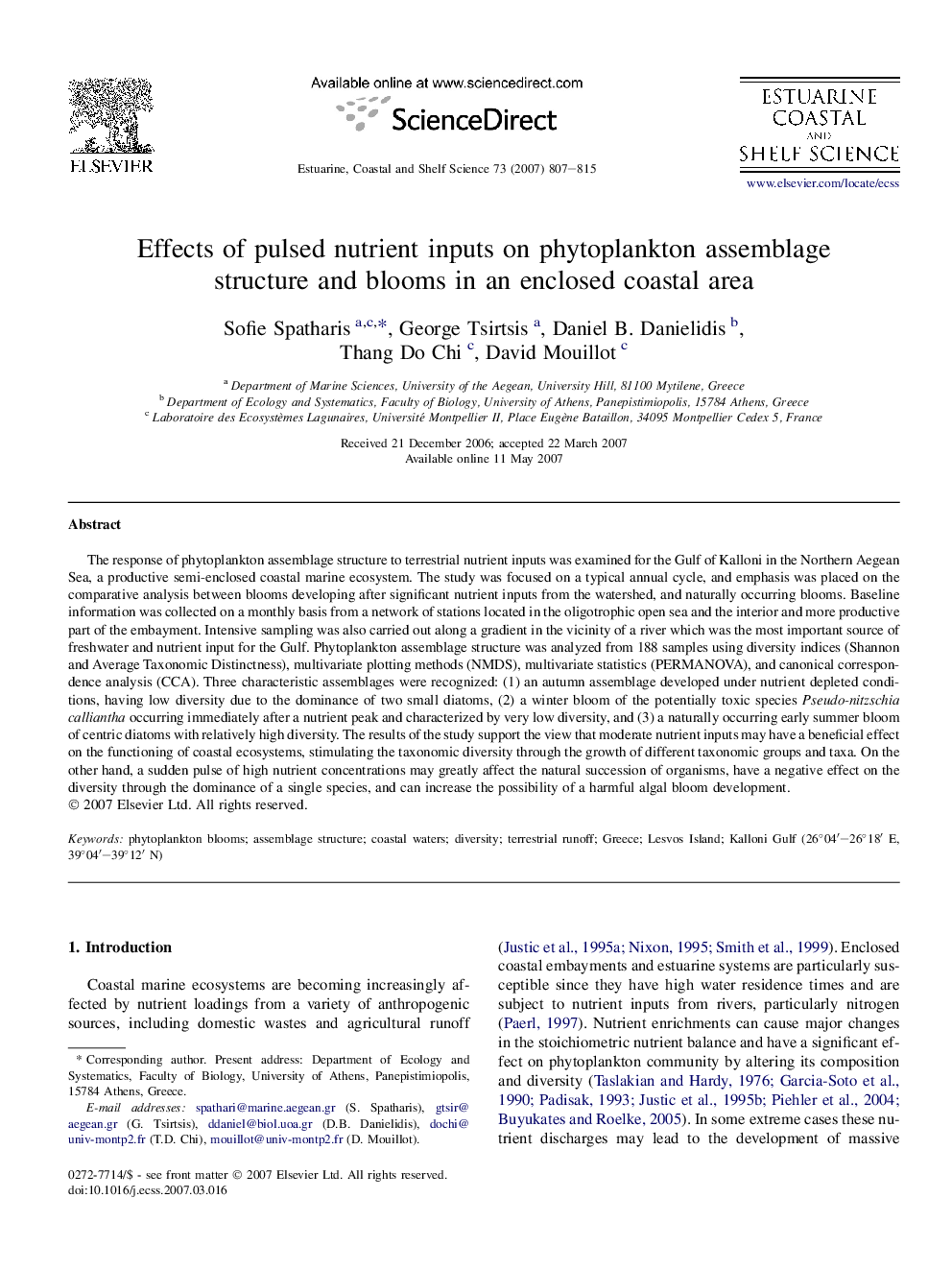| Article ID | Journal | Published Year | Pages | File Type |
|---|---|---|---|---|
| 4541813 | Estuarine, Coastal and Shelf Science | 2007 | 9 Pages |
The response of phytoplankton assemblage structure to terrestrial nutrient inputs was examined for the Gulf of Kalloni in the Northern Aegean Sea, a productive semi-enclosed coastal marine ecosystem. The study was focused on a typical annual cycle, and emphasis was placed on the comparative analysis between blooms developing after significant nutrient inputs from the watershed, and naturally occurring blooms. Baseline information was collected on a monthly basis from a network of stations located in the oligotrophic open sea and the interior and more productive part of the embayment. Intensive sampling was also carried out along a gradient in the vicinity of a river which was the most important source of freshwater and nutrient input for the Gulf. Phytoplankton assemblage structure was analyzed from 188 samples using diversity indices (Shannon and Average Taxonomic Distinctness), multivariate plotting methods (NMDS), multivariate statistics (PERMANOVA), and canonical correspondence analysis (CCA). Three characteristic assemblages were recognized: (1) an autumn assemblage developed under nutrient depleted conditions, having low diversity due to the dominance of two small diatoms, (2) a winter bloom of the potentially toxic species Pseudo-nitzschia calliantha occurring immediately after a nutrient peak and characterized by very low diversity, and (3) a naturally occurring early summer bloom of centric diatoms with relatively high diversity. The results of the study support the view that moderate nutrient inputs may have a beneficial effect on the functioning of coastal ecosystems, stimulating the taxonomic diversity through the growth of different taxonomic groups and taxa. On the other hand, a sudden pulse of high nutrient concentrations may greatly affect the natural succession of organisms, have a negative effect on the diversity through the dominance of a single species, and can increase the possibility of a harmful algal bloom development.
